This site contains affiliate links. As an Amazon Associate, I earn a commission from qualifying purchases at no extra cost to you. Full Disclosure Here.
We’ve reviewed numerous subcompact pistols to find the best options for various needs. Our top pick is the SIG P365 for its high capacity and compact size. We also highlight the Smith & Wesson M&P 2.0 Subcompact for its great trigger and high capacity, the Glock 42 for its light weight and reliability, and the Smith & Wesson M&P Shield EZ .380 for its easy handling, especially for those with limited hand strength. Each pistol has its unique features, making them suitable for different preferences and requirements.
Small handguns are having a moment right now, but the sheer number of great options on the market can make it difficult to pick the best subcompact pistol to meet your needs.
Well, to address that, I’ve tested and reviewed over two dozen of the most popular subcompacts on the market right now to find the best of the best.
At A Glance: Our Top 5 Picks For Subcompact Pistols in 2024
- Best Nightime Concealed Carry Handgun: SIG P365
- Best Premium Product: Smith & Wesson M&P 2.0 Subcompact
- Smallest Glock: Glock 42
- Editor's Choice: Glock 43
- Best Overall: Smith & Wesson M&P Shield EZ .380
Our overall pick, if you’re pressed for time, is definitely the SIG P365, but we’re going to go over seven others that might be better for you depending on your needs and preferences, as well as talk about how to choose the best one for you.
Let’s dive right in with the list.
| IMAGE | PRODUCT | |
|---|---|---|
Best Nightime Concealed Carry Handgun 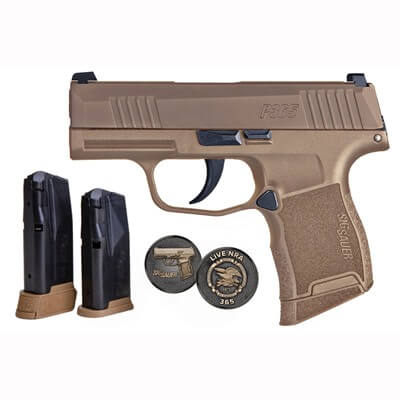 | SIG P365
| VIEW ON BROWNELLS → |
Best Premium Product 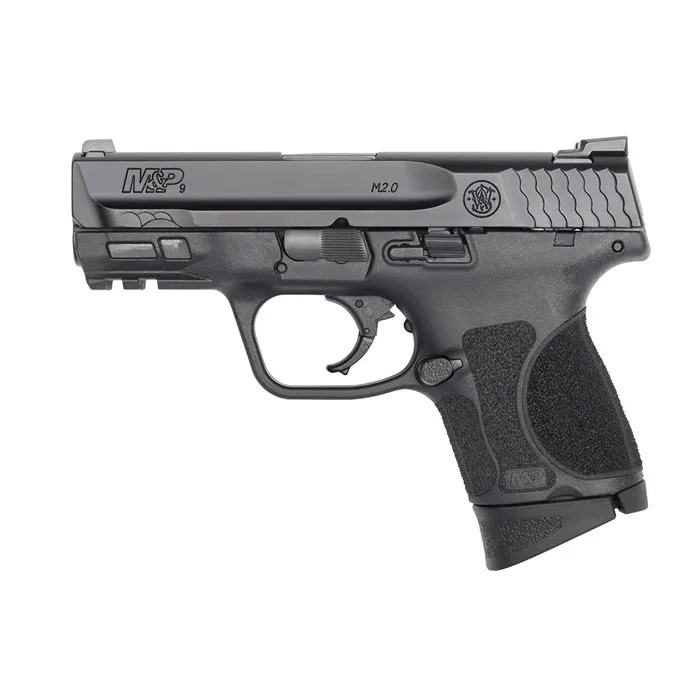 | Smith & Wesson M&P 2.0 Subcompact
| VIEW ON BROWNELLS → |
Smallest Glock 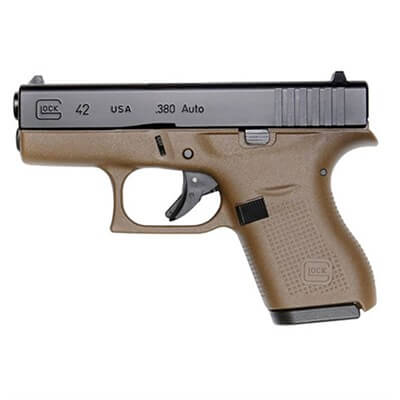 | Glock 42
| VIEW ON SPORTSMANS → |
Editor's Choice 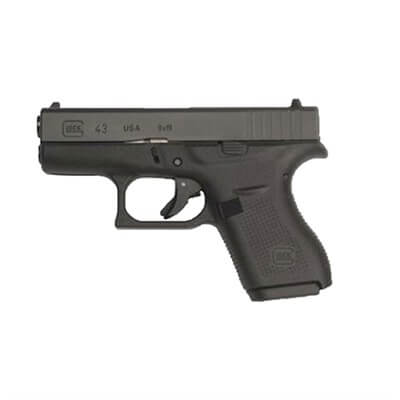 | Glock 43
| VIEW ON BROWNELLS → |
Best Overall 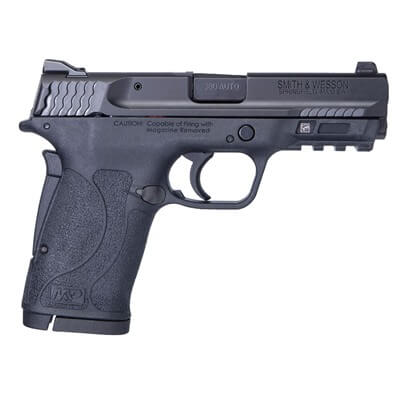 | Smith & Wesson M&P Shield EZ .380
| VIEW ON SPORTSMANS → |
8 Best Subcompact Pistols
1. SIG P365
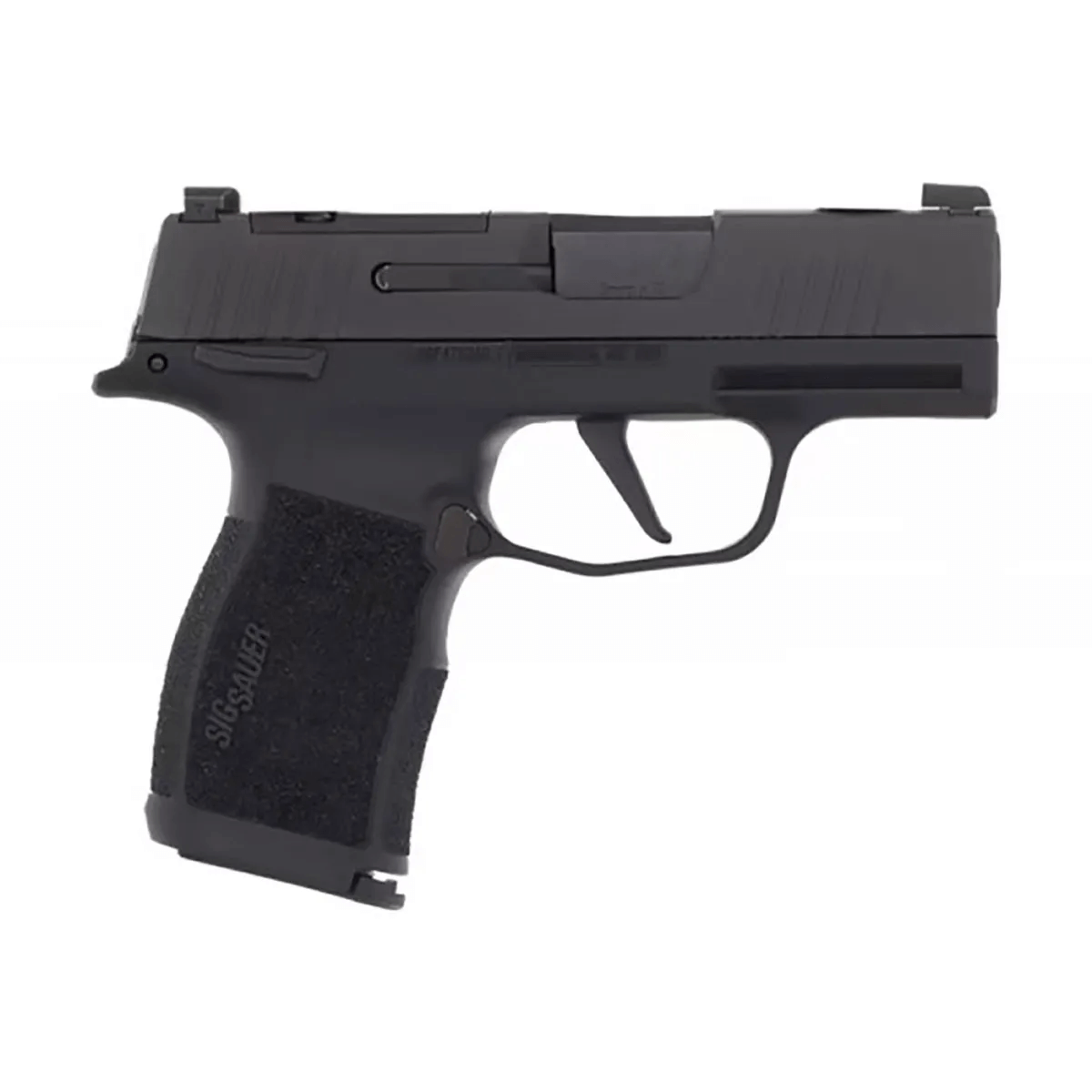
First up, we have our #1 overall choice for a subcompact, the SIG P365. This small little gun has caused quite a stir in the concealed carry community because of its very large capacity for its size.
SIG has done some sort of engineering witchcraft in the magazine department here and managed to fit 10 rounds in a space that, in most other 9mms of this size, would hold maybe 7 rounds.
This is a gun not much larger than the Glock 43 down below in any dimension, but it holds 40% more ammo. That’s insane to me, and to thousands of other gun owners as well because this thing has sold like hotcakes since its release.
It’s also spawned a lot of competition in the gun industry, with the Springfield Hellcat and Ruger MAX-9 (both discussed below) being released as very similar competitors. The P365, for my money, has the other two slightly beat, but that’s mostly down to preference.
And if you want a little something extra, you have two other variants of the P365 as well, the XL variant (guess what that one is) and the SAS version which is not related to British Special Forces, but is actually the SIG Anti-Snag version that has had all the edges smoothed out for pocket carry.
Whichever version you go with, you get that awesome magazine geometry, a truly excellent trigger, and some sights that you can actually use beyond contact distances. All in all, this is the best overall carry gun on the market right now, and it’s sure to serve you well.
Key Specs
- Caliber: 9mm
- Overall Length: 5.8”
- Barrel Length: 3.1”
- Width: 1.0”
- Weight: 17.8 oz
- Capacity: 10+1
Pros
- Easy handling
- Light
- Long trigger well
- One of the best subcompacts made today
Cons
- Long trigger pull
Takeaway
The SIG P365 and its variants have quickly taken the CCW community by storm. These guns have successfully reset the standard for what a concealed carry firearm can and should be.
The subcompact P365 standard version is a phenomenal choice for anyone willing to spend the money on it, and the XL and SAS versions offer more options as well.
2. Smith & Wesson M&P 2.0 Subcompact

The Smith & Wesson M&P series was a decent gun. I shot several in different calibers. With the 2.0 they changed the trigger and it is now far smoother and easier to work. The 2.0 is a huge step forward with a trigger that verges on being a custom setup.
Each one I shot is accurate and handles well. I say this as a shooter sho does not like polymer frame guns.
It comes with a safety and without a safety. People are split on this. I prefer the safety. Others feel the 2-part trigger is enough.
Related Article: 11 Best 9mm Carbines (Pistol Caliber) 2022
It has a short rail under the barrel. It is enough for a light or a laser. If you can manage to carry with a laser on the gun, I recommend that. Lasers make aiming a lot faster and easier especially when you are shooting fast.
It ships with 2 mags. You get 12+1 with each mag. The mag also has a slight extension which is enough for one more finger to wrap around the grip.
While the 9mm is not a heavy recoiling round, the smaller frame and light weight means this will kick more than a full size gun. For someone with small hands, that extra finger on the grip will make a difference.
Key Specs
- Caliber: 9mm
- Overall Length: 6.6”
- Barrel Length: 3.6”
- Width: 1.2”
- Weight: 25 oz
- Capacity: 12+1
Pros
- Great capacity
- Mag extension for better grip
- Awesome trigger
Cons
- On the big end of subcompacts
- Heavy when loaded
Takeaway
This one pushes the limits of subcompact. I say it is a sub, but a small person may still feel it is too much. If you can carry this one and keep it concealed, it is a good choice.
3. Glock 42

No list of the best subcompacts would be complete without the obligatory Glock 42 listing (and the Glock 43 listing below).
The G42, the .380 ACP version, was released to little fanfare and a rather chilly reception because all of the industry insiders and Glock fans had predicted that the G42 was going to be Glock’s long-awaited single-stack 9mm sub-compact.
Related Article: 5 Best Night Sights for Glock Owners
While the G42 met some initial resistance, it quickly won over a large portion of the concealed carry community thanks to its excellent design and classic Glock features. If you want a .380 and you’re already a Glock fan, or you just appreciate their unshakeable reliability, this is a great pick.
Key Specs
- Caliber: .380 ACP
- Overall Length: 5.94”
- Barrel Length: 3.25”
- Width: .98”
- Weight: 13.76 oz
- Capacity: 6+1
Pros
- It is a Glock
- Very light
- Short
Cons
- Fixed backstrap
Takeaway
Glock fans who want the smallest possible Glock are in luck. The G42 is a solid option for anyone comfortable carrying .380, and it has all of the same reliability that has made Glock a household name the world over.
4. Glock 43

Of course, if you don’t love the .380 or just prefer 9mm, Glock has you covered there as well.
The Glock 43 has become one of Glock’s big sellers over the past few years, and many consider it to be just about the perfect size for a pocket carry.
And of course, it’s got the same trigger, sights, and grip angle that you’ve come to know and love/hate from Glock.
Related Article: 10 Best Brass Catchers in 2022 (Pistol & Rifle)
Honestly, there’s not much to say here other than “It’s a subcompact single-stack Glock in 9mm”. You either know what that means and love the idea, or you know what that means and know it’s not for you.
And if for some reason you have never tried a Glock and want to dive right in on one for carry, this is one of my top recommendations for you. It may be a bit boring, but it’s also boringly reliable, and that’s the number one thing we demand out of our carry guns at the end of the day.
Key Specs
- Caliber: 9mm
- Overall Length: 6.26”
- Barrel Length: 3.41”
- Width: 1.06”
- Weight: 16.23 oz
- Capacity: 6+1
Pros
- It is a Glock
- Very thin
Cons
- Heavier than the G42
- 6+1
Takeaway
I absolutely love the G43 and think it might be my favorite Glock to carry. Give it a shot and I think you’ll feel the same way (although the G43X and the G48 are also strong contenders and could have easily made this list as well, even though they’re a little big to be considered subcompacts).
5. Smith & Wesson M&P Shield EZ .380

The Smith & Wesson M&P Shield has been a crowd favorite in the subcompact concealed carry world for a number of years now, so it was a welcome bit of news when I heard that the Shield was getting some kind of new model update a few years ago.
What we got was the Shield EZ .380, which is almost identical to the standard shield, but with a few key changes that make it ideal for certain shooters.
Simply put, the Shield EZ is designed to be easy to load and easy to rack the slide on, making it ideal for those who don’t have a lot of hand strength. It also has the least felt recoil of any gun on this list thanks to the EZ recoil spring and excellently-padded and textured grip.
It still has the same 8+1 capacity and smooth trigger of the updated Shield line, and is in my opinion the perfect option for any recoil-sensitive individual looking for a reliable way to defend themselves.
If you or someone you love has arthritis, some other type of dexterity or hand-strength issue, or just an aversion to snappy pistol recoil, this is the way to go. Read this article to learn about the best night sights for M&P Shield.
Key Specs
- Caliber: .380 ACP
- Overall Length: 6.7”
- Barrel Length: 3.675”
- Width: 1.05”
- Weight: 18.5 oz
- Capacity: 8+1
Pros
- Very light
- Hi Viz sights
- Grip safety
- Bottom rail
- Single piece trigger
- Slide lock/safety
Cons
- 8+1
- Trigger could be better
Takeaway
I love the S&W Shield, and I love that they’ve released a model here that makes armed self-defense more accessible to all people. If you’re worried about any kind of grip-strength troubles, this is the pistol to get.
6. Bersa Thunder
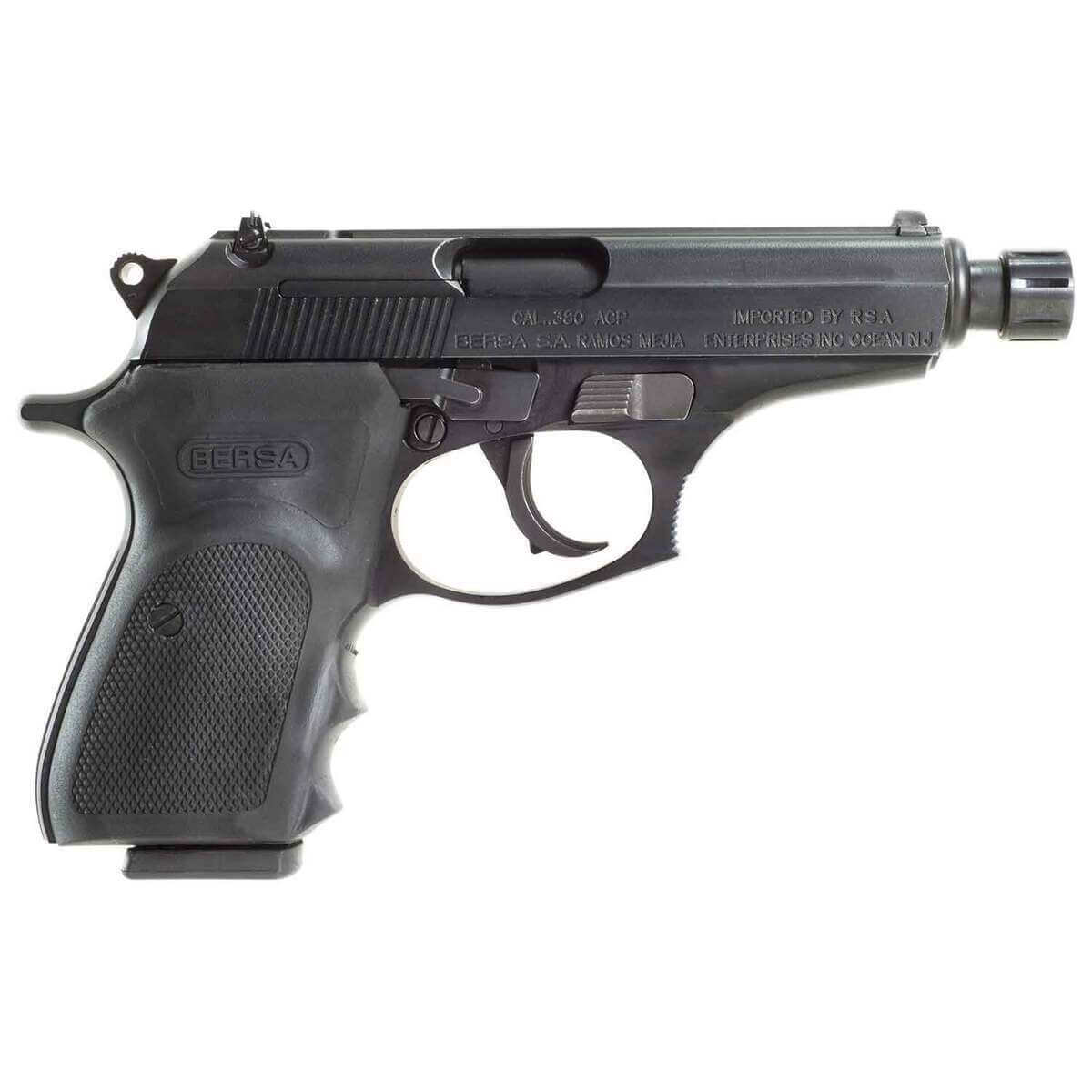
Now for something completely different.
Many of you probably haven’t heard of Bersa before as they’re not exactly a major manufacturer here in the US. They’re actually an Argentinian company founded by Italian immigrants, and they’ve gained a bit of a reputation for solid products in the US market in recent years.
Some of their key products are the Bersa Thunder and its very close cousin the Firestorm. Both of these pistols are based on the Walther PPK, but Bersa hasn’t just been content to churn out copies of a 100-year-old design.
Instead, they’ve tweaked and updated a few key areas of the old PPK, namely that awful, gritty trigger, and polished a few other ergonomic issues out to give us something that is pretty unequivocally better than the original. It’s even more reliable. Sorry, 007.
The .380 chambering is perfect for a gun this size and leaves you with a 7+1 capacity. Not bad at all, and you get to live out your secret agent fantasies on a budget. Just make sure you lube your new Bersa out of the box. One of their cost-saving measures is the fact that the pistols ship dry as a bone.
Other than that, there’s not much bad that I can say here. It’s not as pretty or as polished as some of the other options on this list, but it’s reliable, has usable sights, and is surprisingly accurate in even moderately skilled hands.
Key Specs
- Caliber: .380 ACP
- Overall Length: 6.6”
- Barrel Length: 3.5”
- Width: 1.18”
- Weight: 23 oz
- Capacity: 7+1
Pros
- Curved trigger
- Finger grooves in grip
- Good beavertail
- Threaded barrel
- Manual safety
- All metal frame
Cons
- 8+1
- 20 oz
Takeaway
The Bersa Thunder is the most affordable gun on this list, but don’t mistake cheap for cheaply made. This is a solid, reliable little gun that’s eaten over a thousand rounds in our testing without the first hint of complaint.
7. Springfield Hellcat
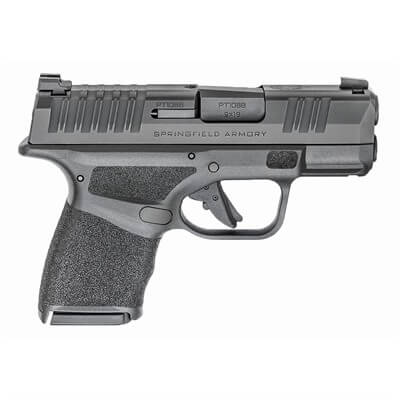
Next up, we have a relatively new gun that’s looking to compete with the SIG P365, the Springfield Hellcat.
The Hellcat is in that “micro-compact” space that the P365 occupies, and has a similar 11+1 capacity. Like the P365, it also has an optics-ready slide. The hellcat is also a hair thinner than the P365, and about the same thickness as the Ruger option below.
Where things differ the most is in the internals. The best way to look at this gun’s insides is to think of the action as a single-action Glock. Springfield has clearly been peeking at Gaston’s test answers when it comes to the inside of this pistol, but hey.
Imitation is the sincerest form of flattery and all that.
And seriously, if you’re going to copy somebody’s notes in the handgun industry, what better place to get your inspiration than the most successful handgun maker of all time?
That’s not to say that the Hellcat is just cribbing off other people’s work, however. There’s some really excellent design going on here, and the gun is just as reliable as you could possibly want. It’s also got a huge advantage over Glock’s in the trigger department.
In an actual Glock, pulling the trigger partially charges the striker, which is where some of your grit and creep can come in. In the Hellcat, the trigger releases the seer and that’s basically it, which makes the trigger a little bit nicer than on Gaston’s Greatest.
Of course “better than a Glock” isn’t exactly high praise for a trigger, and I found the P365 and the Ruger option below to both have better triggers, but your mileage may vary.
Finally, Springfield calls this the highest capacity micro-compact on the market, and I’m willing to allow them to keep that title solely because they do include a 13+1 extended mag in the box. Flush-fit mags are 11+1 which is still amazing and how I personally carry mine though.
Key Specs
- Caliber: 9x19mm
- Overall Length: 6”
- Barrel Length: 3”
- Width: .95”
- Weight: 18.3 oz
- Capacity: 11+1 or 13+1 with included extended mag
Pros
- 12+1
- 14+1 w/extended mag
- Very short
- Adjustable sights
- 18.4 oz
Cons
- Exposed hammer
Takeaway
If you’re a Springfield fan, or just don’t quite want to shell out for the SIG P365 but still want something in the exciting new micro-compact range, then the Springfield Hellcat might be for you. Class-leading capacity and a smooth trigger are helping this gun make some serious waves.
8. Ruger MAX-9
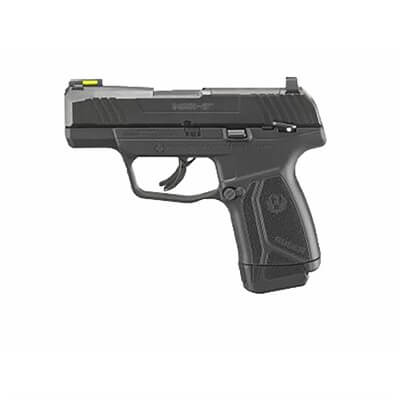
Finally, we have another one of my personal favorites and the latest in the string of micro-compact 9mms with a capacity of 12+1, the Ruger MAX-9. Released to compete pretty directly with the SIG P365 XL, the MAX-9 is sure to be a big name for 2022.
In our testing thus far, it’s been utterly reliable and has chewed through hundreds of rounds of 9mm without a single hangup. It’s also got some surprisingly good sights, and an above-average trigger, especially for the price.
And make no mistake, it’s a great price. You can typically find the MAX-9 (when it’s in stock) for a hundred dollars or so less than the hellcat, and two bills cheaper than the P365 XL.
Related Article: 12 Best 9mm Pistol
Size and weight-wise, it’s almost identical to the Hellcat RDP and slightly longer and taller than the P365 Nitron. All three come in at basically the same weight as well, so a lot of the choice here comes down to preference, budget, and how much you value a smooth trigger (the P365 is the smoothest, followed by the Hellcat, followed by the MAX-9).
Like the SIG and Springfield competitors above, it also comes optics-ready so you can throw your favorite micro-dot on top as well.
Key Specs
- Caliber: 9x19mm
- Overall Length: 6”
- Barrel Length: 3.2”
- Width: .95”
- Weight: 18.4oz
- Capacity: 12+1
Pros
- Adjustable sights
- 2-part trigger
- Manual safety
- Mag has extension
- 12+1
Cons
- Front sight is fiber optic (easy to break)
- Long trigger pull
- No chamber indicator
Takeaway
Love the idea of the P365 or the Hellcat, but not quite willing to shell out the money for one? This is the gun for you. It’s almost brand new (as of this writing) and it’s already shaping up to be one of the best guns released in recent years, especially for the price.
Why Use a Subcompact Pistol?
Subcompact handguns are popular primarily because of the convenience of carrying one. Some sacrifices are made in terms of capacity and how easy they are to shoot, but the small size means they’re incredibly easy to carry.
Being able to simply tuck a subcompact into your pocket is a huge advantage over trying to conceal a compact or worse a full-size handgun. Subcompacts are far and away the most convenient option for staying armed at all times
You sacrifice some capacity and they’re a little harder to shoot than other guns, but the convenience factor more than makes up for it. After all, the gun you have is always going to be better than the one you left in your glove box because it was too heavy.
If you’re carrying inside your waistband, as most people do, you’ll find that carrying a slimmer, lighter pistol is miles more comfortable than say, something like a Glock 19. I personally am okay with only having 10 or even just 6 rounds in a mag, but this is a personal preference thing.
Also read: 7 Best Lights For Glock-19
You may feel differently and feel that’s not enough, and that’s totally fine!
For me (and for the hundreds of thousands of people who carry these guns) the trade-off of having slightly less ammo and a shorter sight radius is worth it to have something that’s lighter, easier to conceal, and just as effective at stopping a threat.
Types of Subcompact Pistol
Subcompact pistols are categorized into several types based on their features and uses. These include single-stack and double-stack subcompacts, which differ in magazine capacity and size. Polymer-frame subcompacts are popular for their lightweight and durability, while hammer-fired and striker-fired subcompacts offer different trigger mechanisms and firing characteristics.
There are also specialized subcompacts designed for concealed carry, emphasizing compactness and ease of use. Each type offers distinct advantages, catering to different preferences and requirements of users.
Subcompact pistols can be broken down into a few different categories, but the biggest debate most people have when choosing any carry gun comes down to which caliber to go with. This is especially a big debate for new shooters, or those who are just starting to carry for the first time.
Well, some of the caliber debate is going to be subjective and depend on your personal preferences, but there are some basic things you need to keep in mind to make a truly informed choice.
Towards that end, let’s talk about subcompact calibers and how to choose.
9x19mm
First up, we have the default choice, the vanilla ice cream of handgun rounds: 9x19mm NATO. Also known as 9x19mm Luger, 9x19mm Parabellum, and The Most Popular Handgun Round Under the Sun.
Don’t get me wrong, I love 9mm guns. I own more 9mm firearms than any other caliber. It’s the most popular handgun round on Earth for several very good reasons, and it’s my #1 recommendation for a sub-compact handgun chambering.
Why is it number 1?
I’m so glad you asked. Mainly, it offers the perfect mix of velocity, projectile mass, and low recoil. This is why everyone from the US Army to the FBI uses it as their sidearm round of choice. Because of this, it’s also cheap, relatively speaking, and available everywhere ammo is sold.
For my money, 9mm is the way to go for most people and is where I recommend starting if you’re new to carrying a firearm, or to firearms in general, and want a handgun.
It’s also going to give you the widest variety of firearms to choose from, as most new handguns are going to be chambered in it, and most brick and mortar stores, as well as gun ranges that do rentals, tend to stock 9mm handguns above all else.
.380 ACP
Not a huge fan of 9mm? Want something smaller, with even less recoil, and an even lighter recoil spring so it’s easier to rack the slide? Then .380 ACP is the round for you, at least when it comes to subcompacts.
Modern .380 ammo has come a long, long way in the past several years, and as gun owners have started coming around to… well, the round, more and more manufacturers have been taking notice and updating their product lines to include .380 stuff.
That includes both defensive ammo manufacturers as well as gunmakers.
These days, you can get some seriously effective .380 ammo that has better ballistic performance on a flesh-and-bone target than you’d get out of 9mm ammo just a few decades ago. Of course, 9mm has also improved, but still.
You can also get a huge number of subcompact carry guns chambered in .380, which is where this round really shines.
If you want something that’s as small as possible, with as little recoil as possible, while remaining powerful enough to stop a two-legged threat, then .380 ACP is the round for you.
.45 ACP
Now, if you read all that (or skipped it because ewwww .380) then you may want something larger. You may want something that has some more oomph to it. You may want something you can suppress really well.
You may want something that echos like a bald eagle’s scream and that won two world wars.
If that sounds like you, then .45 ACP might be the way to go. It’s a big, heavy, slow bullet that suppresses well, expands well in soft tissue, and has a proven history of over 100 years of use in difficult situations.
Now, some people might balk at the idea of a subcompact .45 ACP, but personally, I find it to be a great choice because the recoil impulse of .45 ACP is slower, and more of a rearward push than the sharp snap of some other rounds.
It’s also just a physically larger projectile, so if you are of the opinion that it’s better to have bigger bullets than more bullets overall, then this is probably the way to go. You don’t get much bigger than this, unless you count the precious few 10mm subcompacts out there.
All in all, .45 ACP is still a great handgun round, even for a subcompact, and it offers excellent ballistic performance, at the cost of fewer rounds in the magazine.
It’s also nearly subsonic by default, so this is a good way to go if you want a subcompact that can do double duty as a suppressed home defense gun.
.40 S&W
Just ignore this one.
Just kidding. Kinda.
The truth is, for a lot of people, .40 S&W simply doesn’t provide enough benefit in any particular category to beat out any of the other choices listed here. It’s got a considerable amount more recoil than 9mm or .380 but doesn’t have the energy of the .45 (or the cool factor).
The recoil impulse is also very “snappy” with a large amount of muzzle flip, a problem that is only exacerbated by firing it out of a subcompact with a 3” barrel.
Most shooters I’ve worked with, especially new shooters I’ve trained, have actually found .45 ACP to have a more pleasant and manageable recoil impulse than the smaller, less energetic .40 S&W.
And the venerable .40 definitely has more recoil than 9mm or .380, even though it doesn’t actually perform much better in ballistic gel tests (and arguably real-world usage) than 9mm does.
In addition, the .40 S&W expands far less than the .45 ACP, and is more prone to over-penetration than any other round on this list. It also has the worst performance when suppressed of anything except the .380, which becomes too anemic in subsonic loads.
So why even include it on the list?
Well, simply put, it’s still a very good caliber, it’s still readily available most places (well, as available as any ammo is these days), and there are still a wide variety of guns, subcompacts included, rolling off factory lines with a .40 S&W chambering.
There are also some folks who just find it to be one of their favorite calibers, and if that’s you, don’t let somebody on the internet tell you you’re wrong for using it. I certainly won’t tell you that, I just don’t necessarily recommend it for anybody’s first carry gun, or for use in a subcompact.
But hey, you do you. For me though, I find that I shoot .45 ACP better. And, in my experience, so do most other people, especially when it comes to rapid strings of fire and getting back on target or transitioning targets between shots.
All of which are essential in a defensive use situation.
That said, if you are already a .40 S&W fan and have invested in the caliber and don’t feel like making the switch, then a .40 S&W subcompact can make a lot of sense.
What Should You Look for in a Subcompact Pistol?
When choosing a subcompact pistol, consider factors like reliability, ergonomics, and caliber. Reliability is paramount for personal defense. Ergonomics ensure comfort and control, tailored to hand size and grip style. Caliber choice depends on your balance preference between stopping power and recoil management. These factors collectively determine the effectiveness and suitability of the pistol for personal defense needs.
Now that you’ve picked a caliber, it’s time to look at what overall features your subcompact should have. Some of this is going to be general pistol picking advice, and some of it is going to apply specifically to picking a subcompact.
Reliability
First and foremost, go with something that’s reliable.
Most people aren’t buying a subcompact gun for a range toy or a fun gun, they’re buying it to defend themselves with. I’m going to assume if you’re here, then this is what you’re looking for.
So, go with something that you can either test out yourself at the range before you buy your own, borrow a friend’s, or at the very least do your own research across many, many platforms, and try to find reviews from pros like me, as well as Average Joes and Janes on the internet as well.
At the end of the day, keep in mind that the whole point of carrying one of these guns is to have something on hand in case you need to defend yourself and your loved ones from violence. It’s all well and good to nerd out about this gun or that gun or this new feature or what have you.
When all is said and done though, you’re buying this gun so you have a way to stop a violent threat. Whatever you go with, make sure you’re willing to count on it to save your life.
Related Post: 9 Best Combat Pistol
Shootability
The other big thing to keep in mind, especially with a subcompact, is to get something that you can shoot well. This means prioritizing things like decent sights and a good trigger, as well as not getting something that’s going to have too much recoil or too small of a grip.
Personally, I have smallish hands, but above average grip strength, so a subcompact .45 isn’t a problem for me. For those of you with larger hands, or less than stellar grip strength, maybe stick to something that isn’t going to have as much recoil.
Remember, having that .45 might be the best thing for stopping a threat, but only if you can put that bullet where it needs to go, and preferably send a couple more to the same area close behind it.
In addition to manageable recoil, make sure you have some good sights to use, as well as a good trigger. You can always upgrade your OEM trigger to something better, but if you’re leaving things stock, get something that isn’t going to throw your aim off.
The trigger is your main interface point with the firearm. That’s what moves, and other than sight misalignment, that’s the thing that’s going to introduce inaccuracy into your shooting.
Speaking of sights and shootability, how about getting something that can mount a micro red dot? These things are phenomenal for defensive shooting, are faster than iron sights, and are small enough that you absolutely won’t notice them when carrying inside the waistband.
They also are going to be more durable than your default plastic “iron” sights, and battery life is typically measured in years.
So, if you’re worried about your vision, or you just want to give yourself every edge when it comes to putting rounds where they need to go, get something with an optics-ready slide,
Aftermarket Accessories + Customization
Speaking of accessories, I always recommend going with something that has third-party manufacturers making upgrades for it. Your carry gun should be an extension of you, and it should reflect your shooting style and preferences.
No gun straight from the factory is going to perform as well or be as enjoyable to shoot as one that you’ve tweaked and customized yourself.
This can range from just throwing on a light and some night sights, to doing a trigger swap, to even adding something like a ported slide to help manage recoil during rapid strings of fire.
Of course, if you’re planning on leaving everything stock, you can ignore all of this, but I strongly recommend you look into making whatever gun you go with truly your own.
Final Verdict
There are a huge number of good subcompact pistols out there, but hopefully, now you know which one is the best subcompact pistol for you.
Our number one pick is still going to be the SIG P365 (or XL or SAS version), but if that doesn’t fit your budget, function, or aesthetic requirements then there are seven other phenomenal options out there, particularly the ones on this list.
Whichever one you go with, you can carry confidently (and comfortably), and rest assured that you can protect yourself and your loved ones if, heaven forbid, the need arises
